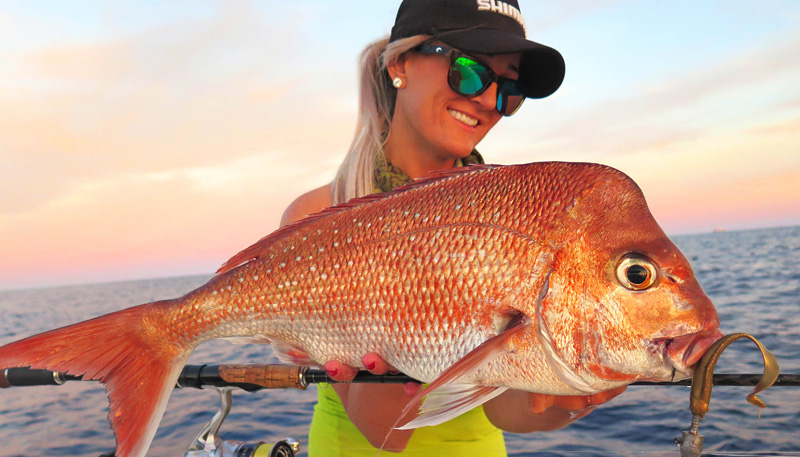
Starlo explains why:
Accurately predicting fishing trends can be tricky, but early in the new millennium, I commented to a few mates that I thought snapper fishing with soft plastics would be one of the most spectacular growth areas in our sport over coming seasons. I wasn’t just talking about chasing big reds in fish-rich waters, either. I was referring to day-to-day, bread-and-butter fishing for pinkies, squire and ruggers (regional names for smaller ‘pan-size’ snapper), even in hard-hit waters close to our major coastal cities, ports and holiday centres; places where these highly-prized fish are nowhere near as easy to find or catch today as they once were.
Here’s why I made that prediction: Snapper have a very wide geographic range that overlaps neatly with this country’s most densely populated coastal regions (basically, the entire southern seaboard from Rockhampton to Carnarvon). In addition, snapper are an iconic species for the Australian recreational fishing fraternity; highly prized, keenly sought-after and readily recognised by even the most casual weekend or holiday angler. Add to this the fact that they respond with great willingness to a range of soft plastics and are available in big estuaries, bays and harbours, as well as inshore and offshore grounds, and you come up with an obvious candidate to become the catalyst for a genuine plastics’ fishing ‘boom’, much like the ones we’d witnessed earlier with flathead, bass, bream, mulloway and barramundi.

Not too surprisingly, history has proven my prediction of a boom in fishing for reds with plastics to be spot-on. Today, fishing with plastics for snapper is a very firmly entrenched part of the overall Aussie angling scene, and Squidgies are recognized as being amongst the very best lures available for this task.
Interestingly, as more and more anglers start playing around with catching reds on rubbers, some great peripheral fisheries are also emerging. Up north, pearl perch, tusk fish, jewies and teraglin are just a few of the ‘extras’ now showing up with increasing frequency on bottom-fished plastics aimed at snapper, while in the south, morwong, nannygai, trumpeter, gurnard, flathead and the like can be added to that list, along with a bunch of less desirable regulars including sergeant baker, red rock cod and pike. Over the in the West, the highly-prized dhufish is also showing a fondness for Squidgies, while pelagics everywhere — from mackerel and cobia to kings and amberjacks — frequently crash the party. All these ‘bonus’ species simply magnify the attractions of bouncing Squidgies in offshore waters, and help to ensure that the snapper-based soft plastic boom will be a long-lasting one.

One of the main reasons for this is the fact that catching snapper on plastics is a heck of a lot more than a novelty, a passing fad or a gimmick. Sure, we all get a buzz out of taking a new or unusual species on a lure, and it can be fun to score an unexpected whiting, blackfish, mullet, leatherjacket or flounder on a chunk of plastic while targeting something more ‘mainstream’. However, this isn’t what snappering with plastics is really about. As a technique, it’s a lot more than an accident. It’s actually an effective strategy that — on its day — can match or even surpass the results recorded by bait fishers. Trust me… it’s true!
In Part 2 we’ll look at the tackle ant tactics needed to regularly catch snapper on Squidgies.